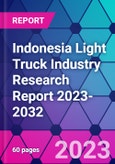Indonesia ranks as ASEAN's second-largest producer of light vehicles after Thailand. The country's Low-Cost Green Car (LCGC) program is gaining traction among global automakers, attracting investments from companies like Honda, Mercedes-Benz, and Mitsubishi. To meet production targets, the government aims to reduce LCGC prices, boosting sales and encouraging automakers to expand local production. Additionally, the Indonesian government plans to increase the local content of domestically assembled cars to more than 90%. Indonesia's emergence as a production hub is tied to the fact that the capacity utilization rate of its plants is lower than that of its Thai counterparts. Capacity utilization at original equipment manufacturing (OEM) sites in Indonesia often falls below 60%, while the Thai average exceeds 65%. This advantage continues to drive the shift of manufacturing operations to Indonesia, given its skilled low-cost labor force.
Mitsubishi has signed a memorandum of understanding (MoU) with Gojek, Pos Indonesia, a local subsidiary of German logistics firm DHL, and Haleyola Power, a power company. Under this MoU, these companies will use Mitsubishi's Minicab-MiEV for deliveries. Mitsubishi is currently the only major Japanese automaker producing light commercial electric vehicles. The company is bolstering its sales both domestically and internationally, with plans to introduce electric vehicles (EVs) to the Indonesian market in the future. In 2022, Mitsubishi began testing its commercial EVs for deliveries to Gojek and other local courier companies in Indonesia.
From 2018 to 2022, light truck sales in Indonesia exhibited a fluctuating trend, initially decreasing and then rebounding, with a Compound Annual Growth Rate (CAGR) of -0.88% during this period. The COVID-19 pandemic significantly impacted the market in 2020, causing a 36.09% decline in annual light truck sales to 271,000 units. Subsequently, as pandemic-related restrictions eased and the economy began to recover, both the market and supply chain gradually improved. In 2021 and 2022, Indonesia's light truck sales witnessed significant growth, increasing by 52.71% and 9.45%, respectively, with annual sales reaching 414,000 units and 453,000 units.
Indonesia's e-commerce sector has also experienced rapid expansion, and the analyst forecasts the country's e-commerce market to reach $53.8 billion by 2025. According to the analyst, the e-commerce market in Indonesia is anticipated to achieve robust growth of 23.8% in 2022, reaching USD 30 billion, as online shopping continues to gain traction. Additionally, Indonesia's export trade surged in 2022, with exports totaling USD 291.98 billion for the year, marking a 26.07% year-on-year increase. With the burgeoning e-commerce and logistics markets in Indonesia, the demand for light trucks in the Indonesian market is steadily expanding.
The analysis projects that light truck sales in Indonesia will reach 1.06 million units by 2032, growing at a Compound Annual Growth Rate (CAGR) of approximately 8.9% from 2023 to 2032.
Topics covered:
- Overview of the Light Truck Industry in Indonesia
- Economic and Policy Environment of Light Truck Industry in Indonesia
- What is the impact of COVID-19 on the light truck industry in Indonesia?
- Indonesia Light Truck Industry Market Size, 2023-2032
- Analysis of Major Indonesian Light Truck Industry Players
- Key Drivers and Market Opportunities in Indonesia's Light Truck Industry
- What are the key drivers, challenges and opportunities for the Light Truck industry in Indonesia during the forecast period 2023-2032?
- Which are the key players in the Indonesia Light Truck Industry market and what are their competitive advantages?
- What is the expected revenue of Indonesia Light Truck Industry market during the forecast period of 2023-2032?
- What strategies have been adopted by the key players in the market to increase their market share in the industry?
- Which segment of the Indonesia light truck industry market is expected to dominate the market by 2032?
- What are the key unfavorable factors facing the Light Trucks industry in Indonesia?
Table of Contents
Companies Mentioned
- Daihatsu
- Honda
- Isuzu
- Mitsubishi
- Mercedes-benz
- Toyota
Methodology
Background research defines the range of products and industries, which proposes the key points of the research. Proper classification will help clients understand the industry and products in the report.
Secondhand material research is a necessary way to push the project into fast progress. The analyst always chooses the data source carefully. Most secondhand data they quote is sourced from an authority in a specific industry or public data source from governments, industrial associations, etc. For some new or niche fields, they also "double-check" data sources and logics before they show them to clients.
Primary research is the key to solve questions, which largely influence the research outputs. The analyst may use methods like mathematics, logical reasoning, scenario thinking, to confirm key data and make the data credible.
The data model is an important analysis method. Calculating through data models with different factors weights can guarantee the outputs objective.
The analyst optimizes the following methods and steps in executing research projects and also forms many special information gathering and processing methods.
1. Analyze the life cycle of the industry to understand the development phase and space.
2. Grasp the key indexes evaluating the market to position clients in the market and formulate development plans
3. Economic, political, social and cultural factors
4. Competitors like a mirror that reflects the overall market and also market differences.
5. Inside and outside the industry, upstream and downstream of the industry chain, show inner competitions
6. Proper estimation of the future is good guidance for strategic planning.

LOADING...
Table Information
| Report Attribute | Details |
|---|---|
| No. of Pages | 60 |
| Published | September 2023 |
| Forecast Period | 2023 - 2032 |
| Estimated Market Value ( USD | $ 493.32 Thousand Units |
| Forecasted Market Value ( USD | $ 1062.62 Thousand Units |
| Compound Annual Growth Rate | 8.8% |
| Regions Covered | Indonesia |
| No. of Companies Mentioned | 6 |









